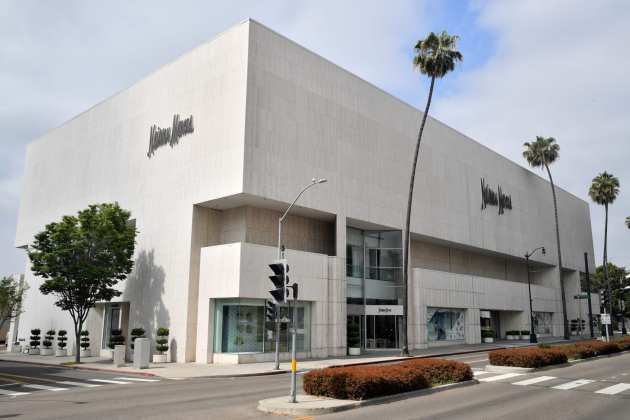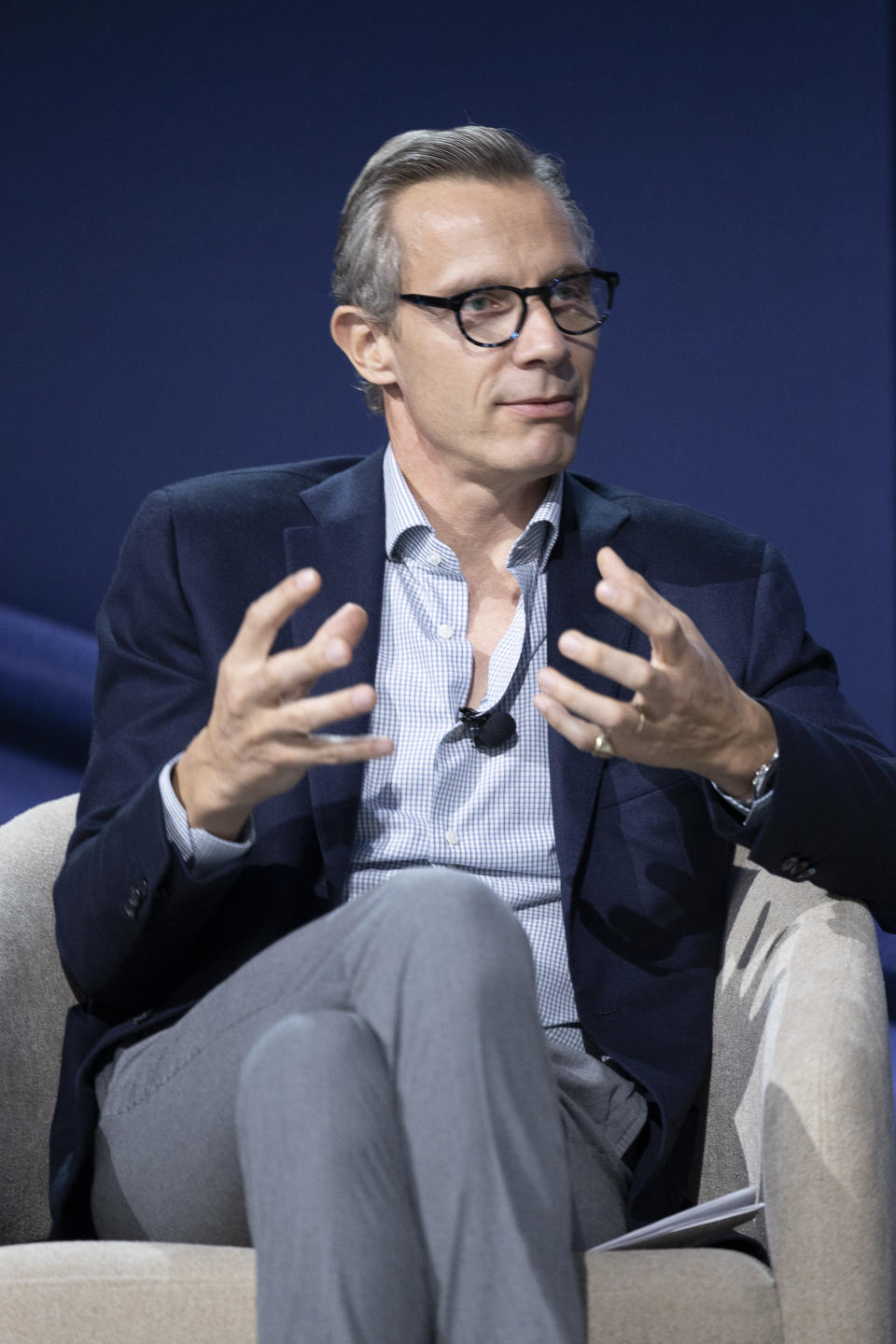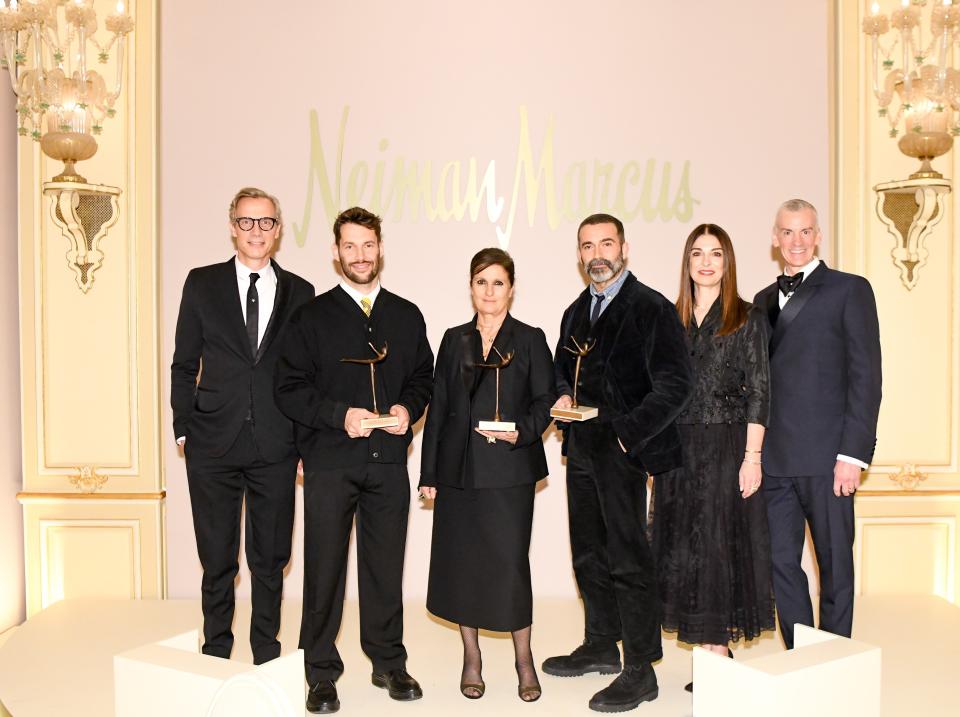Neiman’s Poised for New Growth Phase Despite Tough Sales Climate, CEO Says

Geoffroy van Raemdonck, chief executive officer of the Neiman Marcus Group, contends the luxury retailer he runs is in a better place than the competition and is poised to enter “phase three” of its multiyear transformation.
“The big message is this industry is transforming and different companies are in different places,” van Raemdonck told WWD. “We started transforming earlier than others.”
More from WWD
Phase one of NMG’s transformation began in 2020, during the peak of the pandemic, when the group filed for bankruptcy. Five months later it exited the court proceedings through a debt-for-equity restructuring that enabled the company to shed $4 billion in debt, clean up the balance sheet and restore liquidity, while taking on Pimco, Davidson Kempner Capital Management and Sixth Street as new owners.
Phase two, van Raemdonck said, involved building a business model focused on integrating stores, digital and remote selling with sales associates; exiting the off-price sector; developing the “retail-tainment” strategy of staging new in-store experiences and exclusive offerings in conjunction with designers; focusing on “the most engaged luxury customers,” and spending $200 million on store renovations and $100 million on upgrading technology and the supply chain.
In calendar 2023, remodels of the San Diego, St. Louis and Chicago’s Michigan Avenue stores were completed. This year, remodels are set for the Houston, Bal Harbour, Fla., Oakbrook, Ill., and Beverly Hills stores, some of which are underway.
NMG will enter “phase three” of its transformation sometime in 2024 when the company capitalizes on accomplishments and investments during the first two phases, according to van Raemdonck. Phase three, the CEO said, is about “driving profitable growth.” He sees ongoing opportunities for capturing greater business with “high-value customers,” and continuing to increase points of distribution at Neiman’s locations with top luxury brands.

“I’m not saying we are going to have a specific level of growth in phase three,” van Raemdonck said. Nor is he providing any guidance for the year, though he emphasized, “Phase three is where we are at the point of building growth — sustainable, profitable growth.”
Though retailing has been volatile and there continues to be uncertainty about the economy, van Raemdonck expressed confidence that the Neiman Marcus Group is on the right path — the path he set.
“Other companies have challenges with liquidity,” van Raemdonck said, without naming them. “We are in a very stable place. We believe that our differentiated and profitable business model stands apart in the category.”
NMG competitor Saks has been late paying certain vendors but its CEO Marc Metrick last month told WWD the retailer is getting close to finalizing a deal for additional capital and will make good on past due payments to vendors.
Ironically, speculation persists that Saks continues to be interested in buying the Neiman Marcus Group, and has been trying to arrange financing or partners for a deal. Industry executives have even speculated in recent weeks that a deal for Saks to buy NMG could be close.
Farfetch, the e-commerce company focused on luxury clothing and beauty products, also has experienced financial difficulty. Last January, Korea’s Coupang bailed out the London-based firm, which was running out of cash. Soon after, NMG ended its commercial partnership with Farfetch, which would have helped supercharge the retailer’s digital and omnichannel evolution. In 2022, Farfetch invested $200 million in NMG and remains a minority investor.
Luxury website Mytheresa performed relatively well in its quarter ended Dec. 31, with a decline in net earnings but a solid gain in sales and healthy cash flow.
Generally, luxury players through the holiday 2023 season were dealing with excess inventories and a very promotional landscape.
Speaking of bill paying, van Raemdonck said, “We are fully up to date. We are fully paying on or before the terms and receiving inventory earlier than the prior year. The sooner they ship, the sooner they get paid. We are receiving shipments much earlier. We invited them to ship early. It’s a competitive advantage to get goods early.”
Van Raemdonck also said that the earlier goods are received, the better they sell at full price. “For us, full-price selling was up compared to prior year last quarter. When you have more weeks of full-price selling, you sell more. Luxury fashion customers want to buy goods early because they’re seeing the fashion in the runway shows.”
Later, a NMG spokeswoman indicated: “In aggregate, our brand partners have been shipping one to two weeks earlier than last year and consistent with FY19 timing.”
In NMG’s fiscal second quarter, which corresponds to the fourth quarter of most retailers, inventory was down 9 percent, which helps facilitate earlier deliveries.
Fiscal second-quarter sales declined in the low-single digits compared to the prior year, but full-price selling was up, van Raemdonck said. Second-quarter sales showed sequential top-line improvement to the first quarter when comparable sales were down 8 percent.
Neiman’s, along with other luxury players, appears to have underperformed the retail industry overall, which according to Mastercard and various industry experts, saw a 2 to 3 percent sales lift during the holiday.
In the second quarter, van Raemdonck said adjusted earnings before interest, taxes, depreciation and amortization (EBITDA) grew more than 20 percent compared to the year-ago quarter.
Van Raemdonck did not disclose any dollar figures for the latest quarter. In its last fiscal year, NMG, which operates the Neiman Marcus and Bergdorf Goodman stores and e-commerce sites, generated about $5 billion in gross merchandise value.
He said the business is “healthy with true luxury sales” but experiencing fewer sales on the “aspirational” side of the business. “Some brands were down last quarter but ahead of 2019.”
Through the November and December holiday period, NMG’s best customers spent more and Neiman’s top brands saw growth, according to van Raemdonck. Neiman’s top brands include Louis Vuitton, Chanel, Gucci, Brunello Cucinelli, Christian Louboutin and Dior, among others. The CEO also cited “comparative strength in jewelry, designer handbags, women’s shoes and beauty,” and “strong retention of our top customers at around 90 percent.”

The Neiman Marcus Awards, a ceremony in Paris last week before more than 30 business leaders representing 19 brands, honored Maria Grazia Chiuri of Dior, Daniel Roseberry of Schiaparelli and Simon Porte Jacquemus of Jacquemus. The awards have what NMG executives described as a halo effect on the business, leading to deeper customer engagements with the designer brands and new ways for Neiman’s to market the brands.
In an October 2023 interview, van Raemdonck said business started softening in the second half of October 2022. “From then onward, the number is stable,” he said. “What happened was the more aspirational customer suffered more, and we gained more with the best customers,” shopping higher-priced products.
Best of WWD

